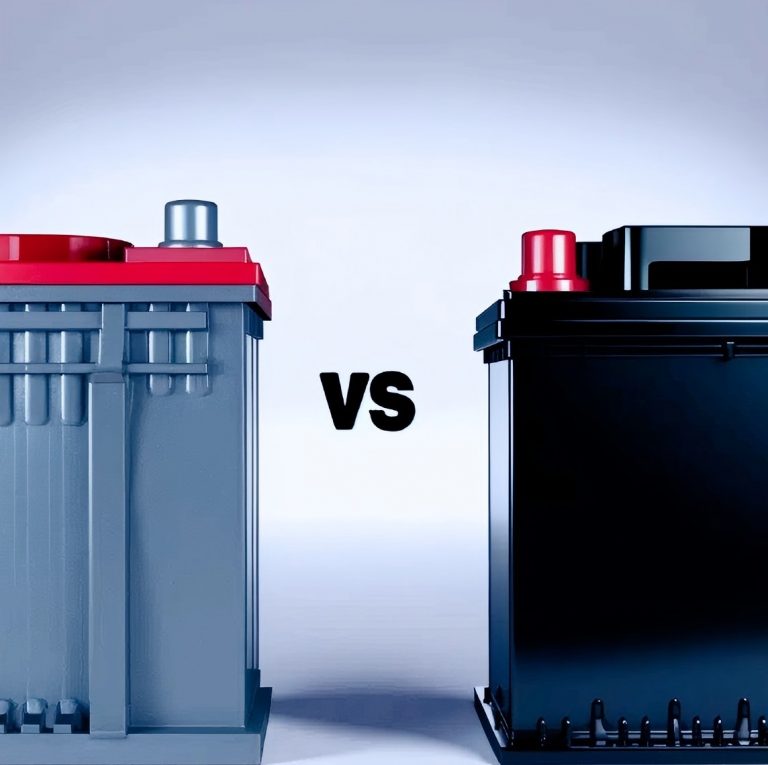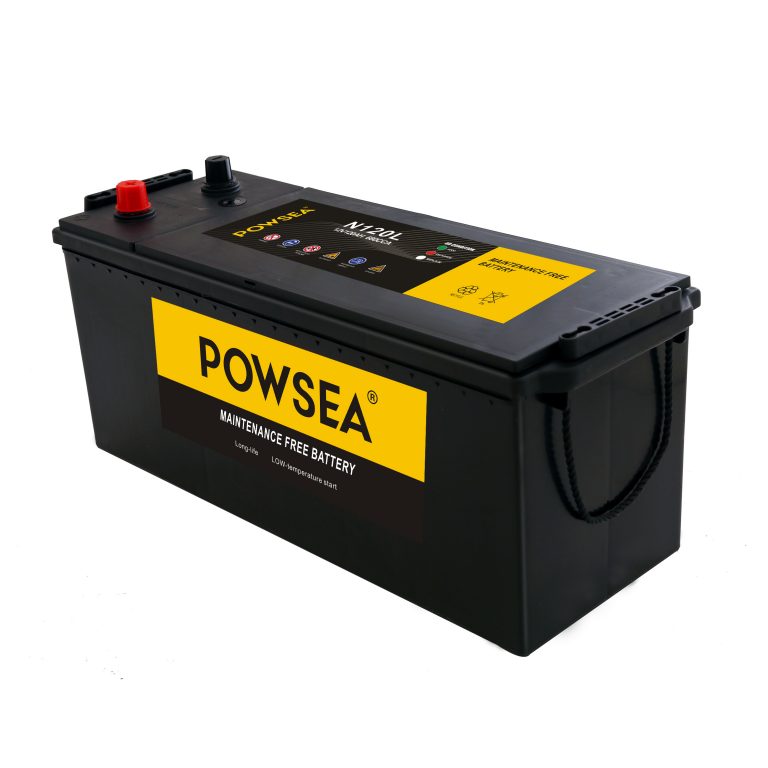Batteria VRLA – Tutto quello che devi sapere
Una guida completa a VRLA Batteria – La valvola regolata Acido di piombo Tecnologia della batteria
1. Cosa significa vrla?
VERO sta per Acido di piombo regolato dalla valvola batteria. È un tipo di batteria con acido piombo sigillato che utilizza un Sistema della valvola che regola la pressione Per controllare l'accumulo di gas interno.
Caratteristiche chiave:
Costruzione sigillata: L'elettrolita è immobilizzato, assorbito in a separatore in fibra di vetro (Tipo AGM) o sospeso in a Gel a base di silice (Tipo di gel).
Controllo della valvola: Un sensibile alla pressione valvola di sicurezza In cima si apre per rilasciare gas in eccesso (ossigeno e idrogeno) in condizioni di sovrapressione, prevenire un'esplosione.
Ciclo di ricombinazione dell'ossigeno: L'ossigeno prodotto nella piastra positiva migra sulla piastra negativa e reagisce con un po 'di acqua, Mantenere l'equilibrio degli elettroliti senza perdita di acqua.
Questo design produce batterie VRLA Senza manutenzione E a prova di fuoriuscita, con Non c'è bisogno di aggiungere acqua Durante la loro vita di servizio.
2. Tecnologia della batteria VRLA: Una breve storia
Prima degli anni '70, Le batterie al piombo-acido richiedevano che le piastre fossero immerse acido solforico a flusso libero, che ha portato alla perdita di acqua durante la carica dovuta a elettrolisi.
Pietre miliari chiave nella tecnologia VRLA:
| Anno | Innovazione |
|---|---|
| 1957 | Azienda tedesca luce del sole sviluppato il Batteria con acido con acido sigillato in gel Sio₂, pionieristico il Vrla Gel formato. |
| 1971 | Cancella energia, U.S.A., introdotto AGM (Tappetino di vetro assorbente) separatori, Risolvere il problema della ricombinazione dell'ossigeno e migliorare il controllo del gas. |
| 1973 | Le batterie VRLA di piccole dimensioni sono diventate disponibili in commercio, Aprire la porta a Sistemi UPS, Backup di telecomunicazione, E energia sedia a rotelle applicazioni. |
Reazione di ricombinazione dell'ossigeno:
Durante la ricarica, L'ossigeno viene generato nella piastra positiva:
Questo ossigeno si diffonde alla piastra negativa, dove si ricombina in acqua, Eliminare la necessità di riempire l'acqua e garantire il controllo della pressione interna.
Reazioni laterali:
Nonostante il meccanismo di ricombinazione, Si verificano ancora due reazioni laterali:
Evoluzione dell'idrogeno (al piatto negativo):
2H⁺ + 2e⁻ → H₂Corrosione della griglia (al piatto positivo):
Pb + H₂O → PbO₂ + 4H⁺ + 4e⁻
Per sopprimere questi, I produttori usano piastre in lega di piombo-calcio, che riducono significativamente l'evoluzione dell'idrogeno e migliorano la durata della batteria.
3. Come funziona una batteria VRLA?
Ecco un diagramma schematico semplificato del meccanismo di lavoro interno della batteria VRLA:

Elementi chiave nell'operazione:
La valvola di sicurezza regola la pressione del gas interno.
O₂ e H₂ sono gestiti attraverso un sistema di ricombinazione interna.
AGM o gel Tiene l'elettrolita in posizione.
Le reazioni elettrochimiche sono progettate per riciclare l'acqua internamente, Rendere il sistema sigillato e a bassa manutenzione.
4. Pro e contro della batteria VRLA
Confronto con altre tecnologie della batteria
| Categoria | Batteria VRLA | Acido di piombo allagato | Ioni di litio | Nimh |
|---|---|---|---|---|
| Sicurezza ambientale | ✅ sigillato, Nessun fuoriuscita | ❌ Rischio di perdite di acido | ⚠️ Elevato impatto delle risorse | ✅ Sicuro |
| Manutenzione | ✅ Non è necessario un topping d'acqua | ❌ Sono richiesti controlli dell'acqua regolari | ✅ Nessuna manutenzione | ✅ Nessuna manutenzione |
| Densità di energia | ⚠️ da basso a moderato | ⚠️ basso | ✅ alto | ⚠️ Moderato |
| Costo iniziale | ✅ da basso a moderato | ✅ basso | ❌ alto | ⚠️ Moderato |
| Vita ciclo | ⚠️ Medium (200–500 cicli) | ⚠️ basso | ✅ alto (1000+ cicli) | ⚠️ Medium |
| Sicurezza | ✅ Molto sicuro | ⚠️ Rischio di accumulo di idrogeno | ⚠️ richiede BMS | ✅ Sicuro |
| Applicazioni tipiche | UPS, telecom, sedie a rotelle | Automobili | EVS, sistemi solari | Piccolo elettronico |
5. Dove sono utilizzate le batterie VRLA?
Le batterie VRLA sono utilizzate in molti settori, Grazie alla loro affidabilità e al design sigillato:
Alimentatori ininterrottibili (UPS)
Stazioni base di telecomunicazioni
Sistemi di accumulo di energia solare e vento
Illuminazione di emergenza & sistemi di allarme
Attrezzatura per mobilità (sedie a rotelle, scooter)
Carrelli elevatori e lavaggi del pavimento
6. Pensieri finali: Perché scegliere vrla?
Le batterie vrla colpiscono un equilibrio ideale tra costo, affidabilità, e manutenzione.
Sono:
Senza manutenzione
Ecologico
Facile da installare
Sicuro e sigillato
Conveniente per il backup e l'uso stazionario
Sebbene non possano offrire la stessa durata del ciclo o la densità di energia delle batterie agli ioni di litio, Le batterie VRLA sono fidati in tutto il mondo per il backup, magazzinaggio, e sistemi di alimentazione off-grid in cui la sicurezza e la semplicità contano di più.
Riferimenti & Ulteriori letture:
Battery Council International (BCI). Manuale tecnico della batteria al piombo-acido.
Sunshine Battery Data fogli.
Gates Energy Products. Tappetino di vetro assorbente (AGM) Panoramica della tecnologia, 1971.
NOI. Dipartimento dell'Energia: Database di stoccaggio di energia.
IEC 60896-21 & -22: Standard Stationary Lead-Acid Batters.

















